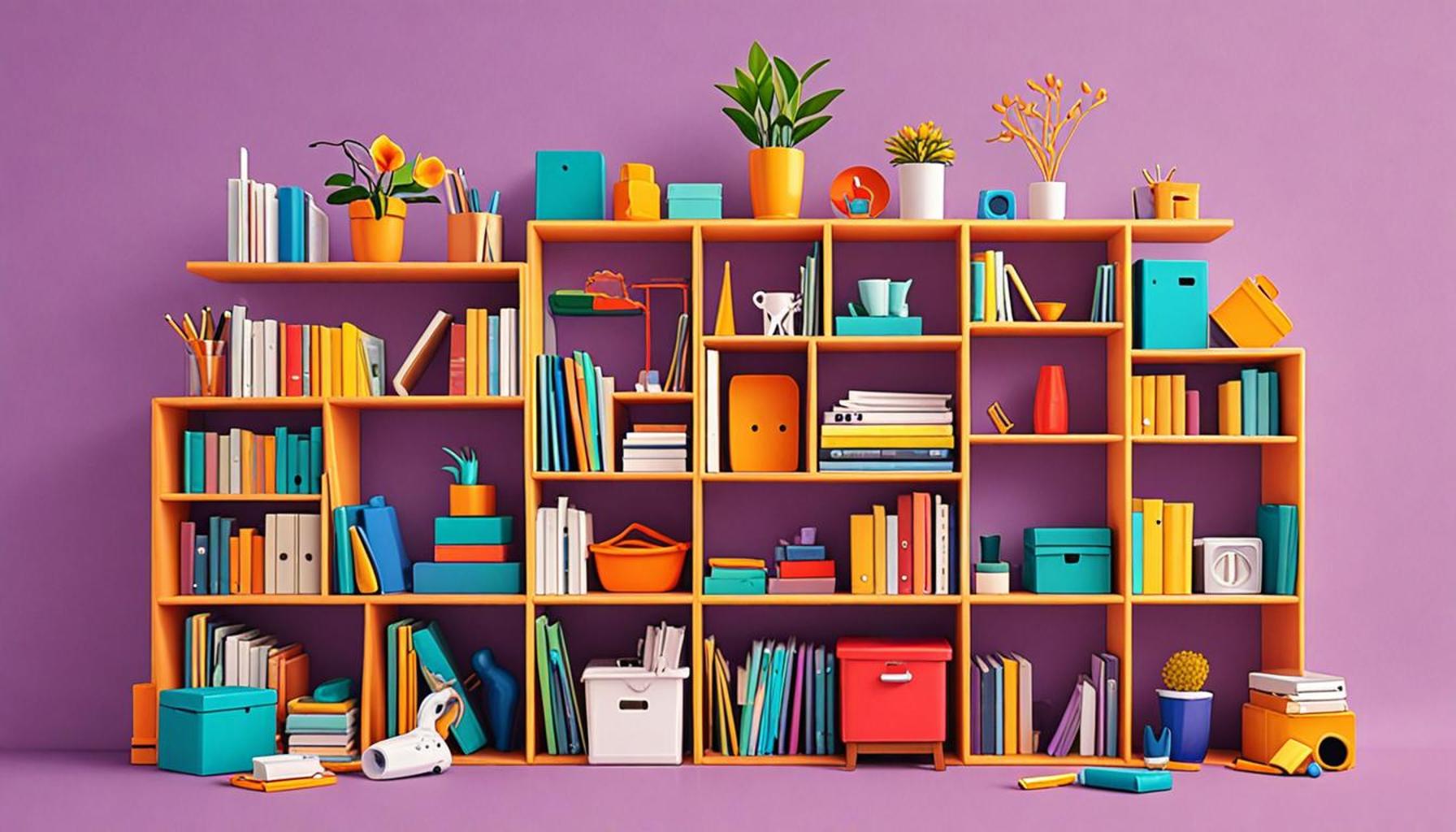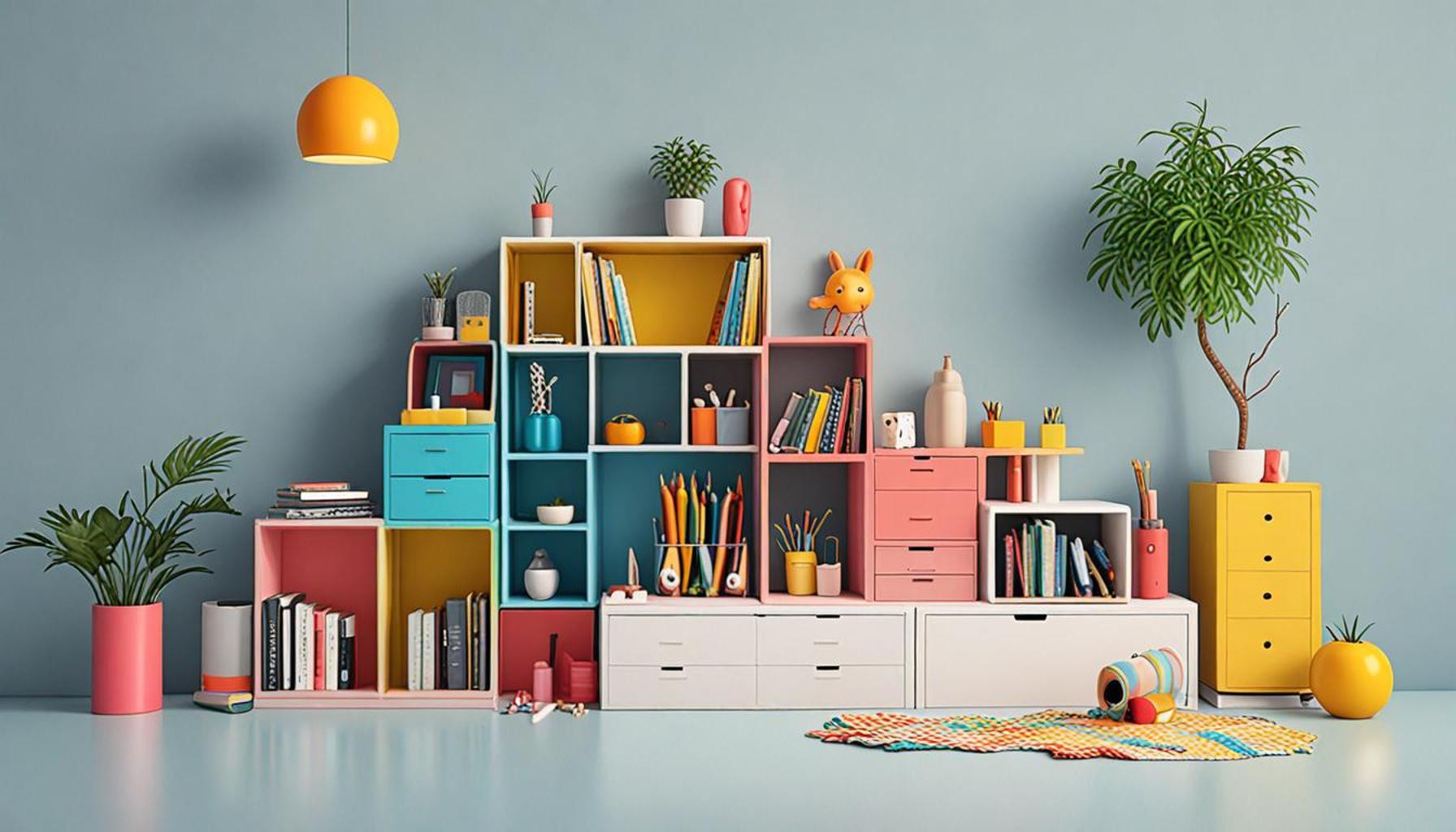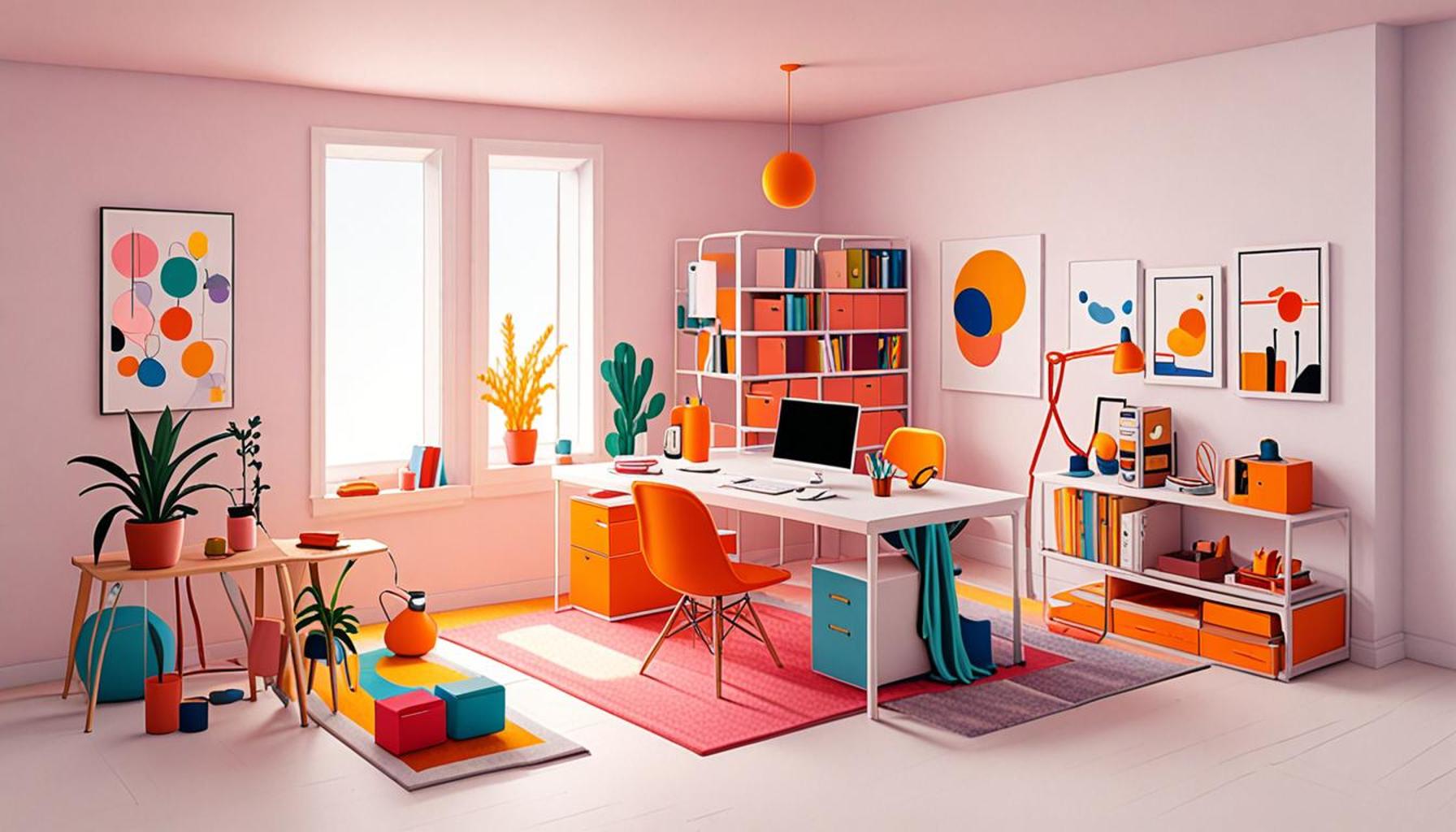The Art of Decluttering: Techniques for Space Optimization in a Minimalist Home

Discovering the Minimalist Approach to Space Optimization
In a world brimming with possessions, the concept of decluttering has evolved into an essential lifestyle choice. More than just a trend, it’s a path toward achieving a cleaner, more organized living space. The minimalist home embraces simplicity, focusing on what truly matters—functionality and aesthetics achieved through intentional choices.
Adopting a minimalist lifestyle offers several benefits, which can dramatically enhance daily living. These benefits include:
- Reduced Stress: An organized space can lower anxiety and improve overall mental health. Studies show that environments filled with clutter can lead to increased levels of cortisol, the stress hormone. By creating a streamlined space, individuals often find themselves more at peace and less distracted.
- Enhanced Productivity: A clutter-free environment promotes focus and efficiency. With fewer distractions, tasks can be completed more quickly and effectively, making it easier to maintain momentum in work and personal projects.
- Financial Savings: Less spending on unnecessary items leads to better financial health. Embracing minimalism means reassessing needs versus wants, which fosters smarter purchasing habits.
To navigate the journey of space optimization, understanding effective decluttering techniques is vital. Among these strategies, consider the following:
- The 30-Day Minimalism Game: This engaging challenge encourages participants to remove one item on day one, two items on day two, and so forth for a full thirty days. It’s a dynamic way to visualize the process and might reveal surprising realizations about attachment to possessions.
- One In, One Out Rule: This simple yet effective strategy advocates that for every new item purchased, one existing item should be eliminated. This concept helps in curbing needless accumulation and keeps your space balanced and intentional.
- Zone Decluttering: By tackling specific areas sequentially, such as each room or category (e.g., clothing, kitchenware), one can avoid the overwhelming feelings that can accompany larger decluttering projects. This targeted approach provides small victories that build momentum.
As you embark on this transformative process, you will not only create a more inviting home but also cultivate a profound appreciation for the essentials. The minimalist approach encourages individuals to question their consumption habits and reflect on what truly adds value to their lives. It’s a journey toward intentional living—simplifying the physical space while enriching personal well-being.
Embrace the art of decluttering, and unlock a world where your space reflects clarity and intention. In doing so, you may discover that minimalism is not just about getting rid of things; it’s about making room for what matters most.
DISCOVER MORE: Click here to learn about how space impacts well-being
Mastering Essential Decluttering Techniques
When it comes to decluttering, it’s not simply about tossing items into the trash—it’s about establishing a systematic approach that can drastically transform your home environment. Understanding effective methods can make the difference between a one-time cleanup and sustaining a minimalist lifestyle. Here are some essential techniques that can facilitate your journey toward a clutter-free life.
The KonMari Method: Spark Joy in Every Item
One of the most popular decluttering techniques is the KonMari Method, developed by Marie Kondo. This approach encourages individuals to evaluate their belongings based on emotional value rather than practicality. Start by categorizing items into groups—clothing, books, papers, miscellaneous items, and sentimental items. As you hold each item, ask yourself, “Does this spark joy?” If it doesn’t, it’s time to say goodbye. This method not only helps in clearing out clutter but also fosters a deeper connection with the items you choose to keep.
The Four-Box Method: Organizing with Purpose
Another effective technique is the Four-Box Method, which creates a clear framework for sorting your belongings:
- Keep: Items that are essential and will remain in your home.
- Donate: Items still in good condition that can benefit others.
- Trash: Broken or worn-out items that need to be disposed of properly.
- Relocate: Items that belong in other areas of your home.
By using this structured system, not only do you streamline the decluttering process, but you also teach yourself to make thoughtful decisions about what stays and what goes. This method is particularly useful for families with children, as it provides an organized approach that everyone can contribute to.
Digital Decluttering: Clearing the Virtual Space
In an age where digital clutter can be just as overwhelming as physical possessions, it’s critical to implement strategies for managing your online life as well. Regularly assess your digital files, emails, and apps, applying similar principles from physical decluttering. Create folders for organization, delete what you no longer need, and adopt a steadfast digital filing system to ensure your virtual space remains manageable. The outcome? A cleaner workspace that enhances focus and productivity.
As you incorporate these decluttering techniques, remember that it’s all about intention and awareness. The goal isn’t simply to remove items but to create a living space that resonates with your values and aspirations. Each of these methods fosters a sense of ownership over your possessions, allowing you to curate your environment to better reflect who you are and what you cherish most.
In the quest for a minimalist lifestyle, these techniques act as stepping stones towards a more intentional and fulfilling existence. Combining various methods can help you discover what resonates best with your style of living, setting the stage for a gratifying journey in decluttering.
The Art of Decluttering: Techniques for Space Optimization in a Minimalist Home
Delving deeper into the art of decluttering, it becomes evident that maintaining a minimalist home requires not only strategic organization techniques but also a profound mindset shift. Below, we explore effective strategies to optimize your space, transforming your home into a serene sanctuary that promotes calmness and functionality.
| Category | Benefits |
|---|---|
| Decluttering Regularly | Promotes an organized environment, reduces stress, and enhances productivity. |
| Vertical Space Utilization | Increases storage options, maximizes floor area, and creates a more spacious feel. |
| Multi-Functional Furniture | Saves space while serving multiple purposes, adding practicality to your minimalist setup. |
The method of decluttering regularly ensures that belongings do not accumulate, thereby fostering a positive atmosphere that promotes mental clarity. Utilizing vertical spaces efficiently can significantly alter the perception of space in a home, inviting an openness often sought in minimalist design. The introduction of multi-functional furniture not only enhances utility but also embodies the true essence of minimalist living—where every item serves a purpose. By incorporating these techniques, individuals can fully experience the liberating effects of a well-optimized home.
DIVE DEEPER: Click here to discover more insights
Strategies for Sustaining a Minimalist Lifestyle
Achieving a clutter-free home is just the beginning; maintaining that serenity requires ongoing commitment and strategic techniques. To effectively sustain a minimalist lifestyle, it’s essential to integrate habits that prioritize simplicity and intentionality in your daily routines.
The One-In, One-Out Rule: Keeping Balance
One effective strategy to prevent new clutter from invading your space is the One-In, One-Out Rule. This principle asserts that for every new item you bring into your home, you must remove one. Whether it’s a piece of clothing, a kitchen gadget, or a book, this rule ensures that your collection remains balanced and manageable. It’s particularly helpful in controlling impulse purchases, encouraging you to consider the necessity and purpose of each new acquisition. This practice not only promotes mindfulness in consumption but also reinforces the values of minimalism.
Regular Decluttering Sessions: Consistency is Key
Incorporating regular decluttering sessions into your monthly or seasonal routine is essential for maintaining a minimalist home. Designate specific times—be it a weekend or a monthly check-in—to revisit items and assess their value in your life. Take time to evaluate spaces that tend to accumulate clutter, such as closets, garages, or home offices. Consider using the same decluttering techniques mentioned earlier, such as the KonMari Method or the Four-Box Method, to keep the process structured. Regularly addressing clutter allows for a more dynamic engagement with your belongings, preventing accumulation over time.
Mindful Consumption: Rethinking Purchases
An often-overlooked aspect of decluttering is mindful consumption, which focuses on making intentional purchases. Before buying anything new, ask yourself if it serves a purpose or if it genuinely adds value to your life. This mindfulness requires evaluating both the necessity of the item and its compatibility with your minimalist lifestyle. The impact of this approach can be profound; studies show that consuming less not only leads to a more organized home but also enhances overall well-being by reducing stress and promoting satisfaction in what you already possess. Creating a ‘wish list’ can help you pause before making any impulse buys, allowing you to consider the true value of each item.
Creating Functional Spaces: Design Meets Minimalism
A significant element of a minimalist home is the functionality of spaces. Consider re-evaluating the layout and design of your home to amplify usability while simultaneously reducing clutter. Multi-functional furniture, such as ottomans that double as storage or a coffee table that can convert into a desk, can significantly enhance your space. Additionally, decluttering serves as a precursor to better home organization. Utilize storage solutions like baskets, bins, and shelves to maximize vertical space and maintain a streamlined aesthetic. Effective use of light and neutral colors can also contribute to a more open and airy feeling, further supporting a minimalist vibe.
These strategies not only assist in maintaining a clutter-free environment but also cultivate a deeper connection to the items that define your space. As you enhance your understanding of sustainable practices in decluttering, you will find the clarity and tranquility that a minimalist lifestyle can offer.
DIVE DEEPER: Click here to learn more
Conclusion: Embracing Minimalism for a Harmonious Home
In conclusion, the art of decluttering extends beyond simply tidying up; it embodies a lifestyle choice that fosters peace and intentionality within our homes. By employing effective techniques such as the One-In, One-Out Rule, engaging in regular decluttering sessions, practicing mindful consumption, and creating functional spaces, individuals can not only optimize their living areas but also cultivate a more profound connection with their possessions.
Transitioning to a minimalist home requires dedication and a willingness to rethink old habits. Yet, the benefits are substantial—reduced stress, increased focus, and enhanced satisfaction with existing belongings can transform the mundane into something truly satisfying. Adopting a minimalist approach means challenging the consumerist mindset that often permeates modern culture, steering yourself toward meaningful choices that resonate with your values.
As you embark on this journey, remember that the goal is not merely to eliminate items but to embrace a lifestyle that prioritizes quality and purpose. Through consistent practices and mindful evaluation of your surroundings, you can achieve and sustain an environment that reflects serenity and joy. Whether you’re a seasoned minimalist or just beginning, the art of decluttering provides essential tools to reclaim your space and, ultimately, your peace of mind. Explore further the evolving world of minimalism and discover how a simplified life can lead to greater fulfillment.



